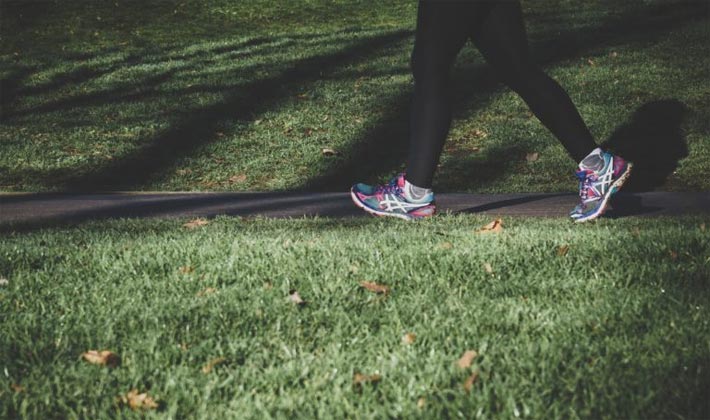 Whether the goal is to become more active, get out and spend more time with family, or just to keep mental health in check during these unprecedented times, a lot of people have incorporated walking into their new daily routines. There has been a noticeable increase in outdoor foot traffic since the start of COVID-19, especially now that the weather is getting nicer.
Whether the goal is to become more active, get out and spend more time with family, or just to keep mental health in check during these unprecedented times, a lot of people have incorporated walking into their new daily routines. There has been a noticeable increase in outdoor foot traffic since the start of COVID-19, especially now that the weather is getting nicer.
For any physical activity, especially long-distance walking, it is important to take into consideration the type of footwear you are wearing. Wearing proper footwear with adequate support will help decrease unwanted strain in the muscles and joints of the feet and lower limbs by structurally helping to keep the body aligned and the foot functioning more properly. This in turn will provide more comfort to the feet and lower limbs as well as decrease or prevent any injuries or painful conditions that may be experienced such as arch and/or heel pain, forefoot pain, knee, hip and low back pain.
Choose the Right Shoes
When choosing the right pair of shoes to walk in, look for shoes that structurally offer support – which means nothing too flexible. The shoe, ideally an athletic shoe/sneaker, should consist of:
[styled_list marker=dot]
- Proper flexion points i.e. flexes at the forefoot and not throughout the arch.
- Sturdy structure with good torsional stability. To test this, try twisting the base of the shoe, if you can twist it, chances are it will not support your foot.
- Firm heel counter (back part of shoe directly behind your heel). This will help prevent the foot from rolling which is important when trying to avoid unwanted movement in the feet.
- Ideal heel height should be approximately 6mm from front to back of the shoe.
[/styled_list]
Make sure your footwear is the proper size both in length and width. Wearing ill fitting shoes can further contribute to painful foot conditions, poor circulation as well as corns and callouses experienced usually at the base of the feet or around the toes. Ideally, you should have one finger space in front of the longest toe during weight bearing and there should be no side-to-side squeezing of your foot once placed in the shoe.
Buying Shoes Online
If you are ordering footwear online or you are doing local curb side pick up, make sure you do the research ahead of time to be certain you are getting the right type of shoe to properly support your feet. If you do not have access to purchase new shoes, make sure when choosing from your existing footwear, you chose the ones that best match the features listed above.
Socks
Wearing the right kind of socks is also important. When choosing socks to wear for long distance walking, you want to make sure the top of the sock is higher than the height of your footwear. This will prevent rubbing and irritation at the back of the heel as well as prevent the sock from slipping down into the shoe. You want to chose a material that consists of wool (preferably marino wool) or equivalent or a mixture of wool and cotton blend; wool for its moisture-wicking properties and cotton for its added cushion. Wearing cotton alone is poor for wicking away moisture (perspiration) and can cause rubbing and friction which can lead to hot spots or blisters on the feet.
Orthotics
If you wear orthotics on a regular daily basis, it would be beneficial to wear them during this increase in physical activity. However, if this is the first time wearing them during exercise, I would encourage you to build up your tolerance to wearing them a little more every day for the first couple of weeks until eventually you are able to comfortably wear them during the entire duration of your walk.
A Few More Tips
Callousing occurs in high pressure areas. If you notice callouses forming, typically on the bottoms of your feet, usually under the heels or balls of your feet, make sure to moisturize your feet regularly and file down these callouses as they build up.
Wearing footwear around the house, such as a supportive sandal, slipper or running shoe will help keep feet supported and comfortable while home, which in turn will have overall positive effects on how comfortable your feet feel throughout the day, including during exercise. If your feet are tired from going barefoot, getting the courage to exercise will be a lot more difficult.
Lastly, the best piece of advice I can probably give you is to start off slow and work your way up to a distance and pace that is comfortable for you. If you do too much too soon, you may cause yourself more harm. It is better to be proactive than have to seek help after the fact, especially during these unparalleled times when seeking advice from a foot care professional may be difficult.
Good luck and happy walking!
By Jodi Basha, C. Ped (C)
